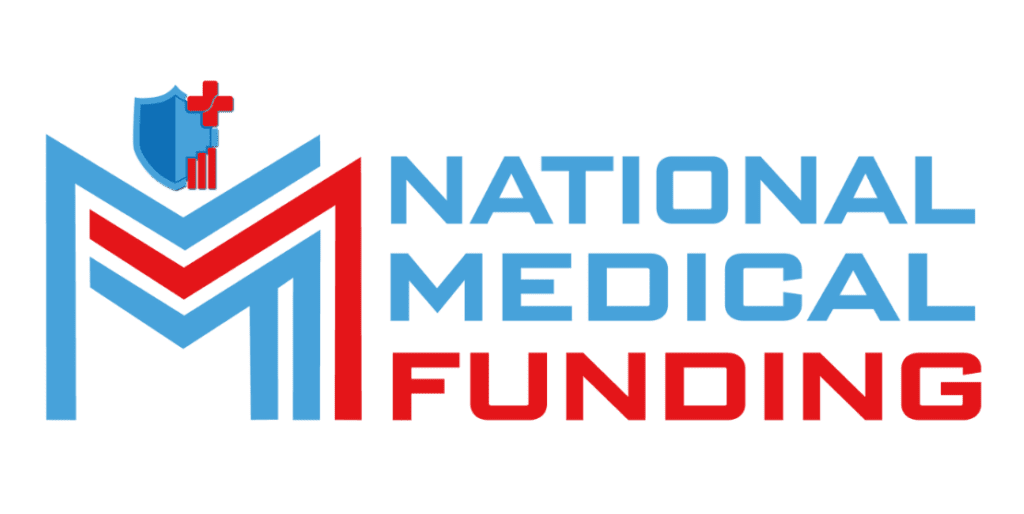
When to Lease vs. Own: A Financial Strategy f
Every healthcare professional knows that medical equipm...

Saturday and Sunday – CLOSED
support@nationalmedicalfunding.com



Healthcare is essential, but let’s face it—running or starting a medical practice requires more than just medical expertise. It also takes money. Whether it’s investing in new equipment, hiring staff, or simply keeping the lights on during slow months, financing plays a huge role in the healthcare industry. The good news is that there are several ways to cover these costs. In fact, experts generally talk about four modes of healthcare financing that make it possible for patients to get care and for practices to keep running smoothly.
In this guide, we’ll break down those four modes in a way that’s easy to understand. Along the way, we’ll explore how they affect both patients and providers, and we’ll also look at medical financing solutions for practices that need extra support. If you’re a physician considering medical practice startup loans or looking for secure medical financing options, this post will give you the clarity you need.
Running a medical practice is not like running any other business. The stakes are higher, the costs are heavier, and the challenges are unique. Patients expect top-quality care, but the technology and staff needed to provide that care don’t come cheap. That’s why understanding healthcare financing isn’t just an option—it’s essential.
Imagine opening a clinic without funds for equipment, staff salaries, or digital record systems. Pretty tough, right? That’s where different modes of financing step in. They ensure that healthcare isn’t just available but also sustainable. For practice owners, financing offers the flexibility to manage unexpected challenges, from seasonal dips in revenue to sudden equipment breakdowns. This is where tools like secure medical financing can make all the difference.
So, what exactly are the four modes of healthcare financing? At their core, they can be broken down into:
Each of these has its strengths and weaknesses, and their balance often depends on where in the world you’re located. But for medical practices everywhere, knowing how they work helps you understand the flow of money in healthcare—and where medical financing solutions fit in.
The most straightforward mode of healthcare financing is out-of-pocket payments. This is when patients pay directly for their healthcare services, whether it’s for a doctor’s visit, a lab test, or a procedure.
While it may seem simple, this method puts a significant burden on patients, especially if they face unexpected health issues or emergencies. For practices, relying solely on patient payments can lead to irregular cash flow. That’s why many clinics consider medical practice startup loans or working capital financing to ensure they don’t rely only on patients’ ability to pay upfront.
If you’re a provider, understanding this payment mode is crucial. It helps you balance patient expectations with the financial realities of running a practice. For more insights into smart financing choices for medical practices, check out this detailed guide on strategic financing for medical practices.

Private health insurance is perhaps the most common form of healthcare financing in many developed nations. Instead of patients paying out of pocket for every visit, they pay insurance premiums, and the insurer covers part (or most) of the cost when they need care.
For practices, this means fewer unpaid bills and more predictable revenue. However, insurance reimbursement can come with delays, complicated paperwork, and negotiations over covered services. That’s why many providers seek medical financing solutions to bridge the gap between rendering care and actually receiving payment.
From the patient’s perspective, insurance reduces the financial shock of medical emergencies. But for providers, the waiting period for reimbursements often means needing additional financial backup. This is where tools like secure medical financing keep things running smoothly.
Public health insurance programs, such as Medicare and Medicaid in the U.S., provide government-backed healthcare coverage. These systems are designed to improve access to essential care, particularly for vulnerable populations.
For practices, participating in public health programs expands their patient base but also comes with its own challenges. Government reimbursement rates may be lower than private insurance, and there are often strict compliance requirements. As a result, many practices use medical practice startup loans or operational funding to balance costs while continuing to serve patients under public programs.
To make informed decisions on funding strategies, explore these smart financial moves for new medical practices. They’ll help you navigate the balance between care and cost with confidence.
The fourth mode of healthcare financing often gets less attention: donor and alternative funding. This includes grants from nonprofits, contributions from international organizations, or even crowdfunding initiatives.
In some countries, donor funding plays a huge role in keeping healthcare systems alive. For individual practices, alternative financing can mean exploring options like specialized loans, receivables financing, or even partnerships. These medical financing solutions give providers a safety net when traditional methods fall short.
If you’re thinking about growth strategies that go beyond traditional funding, here’s a great resource on why funding your practice assessment is the smart growth strategy. It’s all about making sustainable choices for long-term success.
Even though the four modes of financing cover the basics, many practices still struggle with cash flow. Delays in insurance reimbursement, uneven patient demand, or costly equipment upgrades can put real pressure on finances. That’s why secure medical financing is more than just a backup—it’s a lifeline.
For startups, medical practice startup loans provide the capital to launch smoothly without cutting corners on quality. For growing practices, financing ensures expansion doesn’t get stalled due to funding gaps. This is where specialized providers like National Medical Funding step in, offering tailored solutions designed specifically for healthcare professionals.

Not every practice has the same needs. Some may need help covering operational costs, while others might be focused on expansion or equipment upgrades. That’s why choosing the right medical financing solutions is all about clarity.
Ask yourself: Do you need short-term funding to cover payroll? Or are you looking at long-term loans to expand your clinic? By aligning financing choices with your practice’s goals, you avoid unnecessary debt and secure growth at the right pace. If you’re ready to learn how to fund your clinic without unnecessary stress, read this helpful guide on finance for healthcare professionals made simple.
Healthcare financing is always evolving. With rising costs, new technologies, and changing patient expectations, practices will need to explore smarter ways to keep their operations strong. Digital financing platforms, flexible repayment models, and practice-specific funding will likely play a bigger role.
The takeaway? Understanding the four modes of healthcare financing is only the first step. The real power lies in combining these systems with smart financing strategies that ensure your practice thrives—not just survives.
We’ve walked through the four modes of healthcare financing: out-of-pocket payments, private insurance, public insurance, and donor or alternative funding. Each plays a critical role, but for medical practices, relying solely on these modes often isn’t enough. That’s why providers turn to secure medical financing and medical practice startup loans to bridge gaps, fuel growth, and ensure patients always receive the care they need.
By exploring different financing options and aligning them with your practice’s vision, you can create a sustainable financial strategy. And with the right support, like the solutions offered by National Medical Funding, you’ll always have the tools to keep your practice strong and your patients happy.
Every healthcare professional knows that medical equipm...
Why Practice Valuation Matters More Than Ever If ...

Fuel your medical practice’s growth with financial solutions tailored to your needs. We’re here to support independent practitioners and group practices with strategies built for success.
Mon Fri: 8:00am – 6:00pm
Saturday: Closed
Sunday: Closed
Copyright © 2025 National Medical Funding